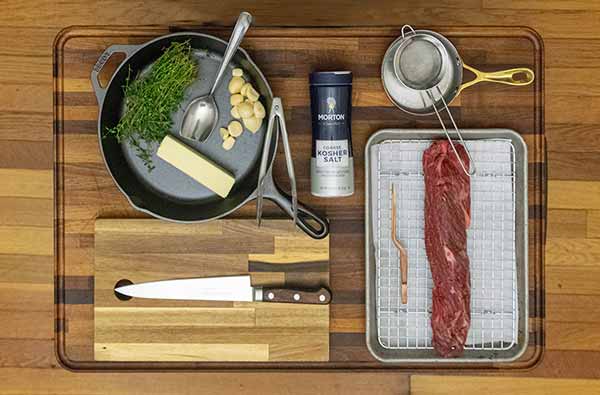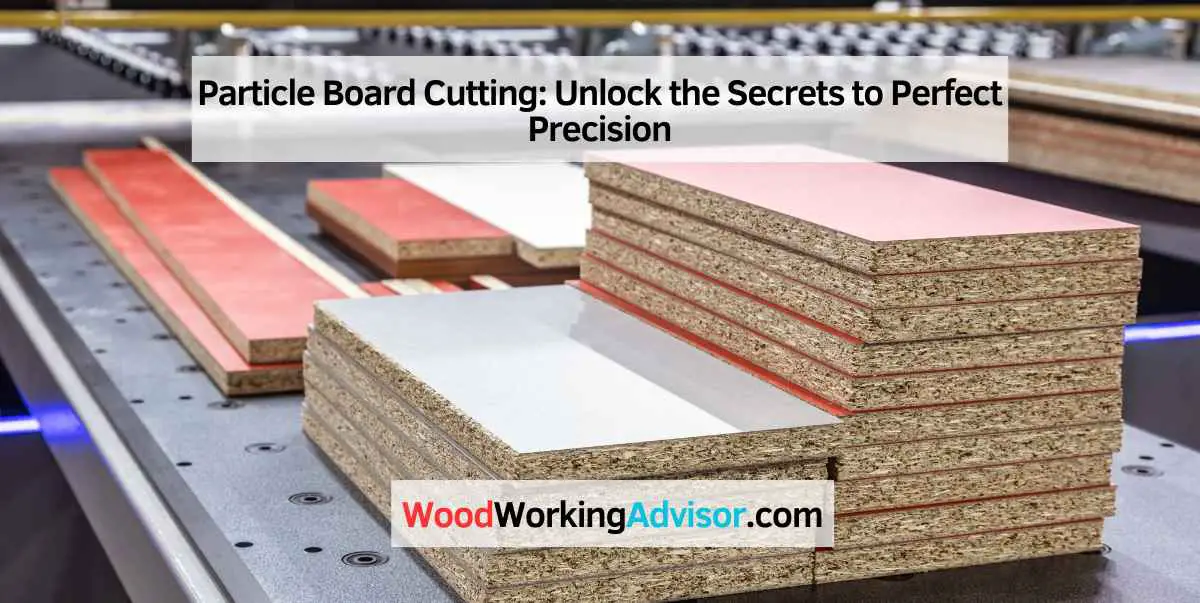Particle board cutting can be done with a circular saw or table saw for smooth edges and precise cuts. It is important to wear safety gear when cutting particle board to prevent injuries.
Particle board, a cost-effective and versatile building material, is commonly used in furniture and cabinetry due to its affordability and durability. Cutting particle board requires attention to detail and the right tools to ensure clean and accurate cuts. By following proper safety guidelines and using the appropriate cutting techniques, you can achieve professional results when working with particle board.
We will discuss the methods and tips for cutting particle board effectively and efficiently.

Credit: gmarketchef.com
Choosing The Right Particle Board
Particle board cutting requires choosing the right type to ensure the desired outcome.
Understanding different types and considering size and thickness are crucial steps.
Understanding Different Types
Particle boards come in various types, such as standard, moisture-resistant, and fire-retardant.
Each type serves specific purposes based on project requirements.
Considering Size And Thickness
Size and thickness play a critical role in particle board cutting.
Selecting the right dimensions ensures stability and durability in your project.

Credit: www.amazon.com
Essential Tools For Particle Board Cutting
When cutting particle board, having the right tools is essential for achieving precise and efficient results.
Circular Saw Options
A circular saw is a popular choice for cutting particle board due to its versatility and ease of use.
When selecting a circular saw for particle board cutting, consider the blade type and size for clean cuts.
- Circular saw with a carbide-tipped blade for smooth cuts
- Adjustable blade depth to control the thickness of cuts
Safety Equipment
Safety is paramount when working with power tools. Be sure to use the following safety equipment:
- Protective eyewear to shield eyes from debris
- Dust mask to prevent inhalation of particles
- Ear protection to reduce noise exposure
Wearing the appropriate safety gear minimizes the risk of accidents and ensures a safe cutting process.
Cutting Techniques For Particle Board
Particle board, also known as chipboard, is an economical and versatile type of engineered wood typically used in furniture and cabinetry. When it comes to cutting particle board, it’s crucial to employ the right techniques to achieve clean, precise cuts. Let’s explore the key cutting techniques for particle board, from measuring and marking to preventing chip-out.
Measuring And Marking
Accurate measurements and markings are critical for achieving precise cuts in particle board. Before cutting, use a tape measure and a pencil to mark the desired dimensions on the board. Additionally, if multiple pieces need to be cut to the same size, make sure to use a straight edge or a T-square to create parallel and uniform markings.
Preventing Chip-out
Chip-out can detract from the quality of the finished particle board edges. To minimize this, it’s essential to use the right tools and techniques. When making cuts, ensure that the blade of the saw is sharp to reduce tear-out. Using masking tape along the cutting line can also help to prevent chip-out by providing support to the edges of the board during the cutting process.
Optimizing Precision And Accuracy
When it comes to particle board cutting, precision and accuracy are essential for achieving the best results. Whether you are a professional carpenter or a DIY enthusiast, optimizing accuracy can help you create seamless and neat cuts on particle board. By employing a few key strategies, you can enhance your cutting skills and ensure that your projects are executed flawlessly.
Maintaining Sharp Blades
Having sharp blades is crucial for achieving accurate particle board cuts. Dull blades can cause splintering, rough edges, and imprecise cuts. To maintain the sharpness of your blades:
- Regularly inspect the blade for any signs of wear and tear.
- Sharpen the blade using a sharpening stone or replace it if necessary.
- Ensure proper blade alignment on your cutting tool.
- Use the appropriate cutting speed to prevent blade overheating.
Using Cutting Guides
Another effective way to optimize precision and accuracy in particle board cutting is by using cutting guides. Cutting guides provide a stable and straight edge for your saw, minimizing the risk of veering off course and producing uneven cuts. Here are some ways to use cutting guides:
- Secure the cutting guide firmly on the particle board.
- Align the blade of your saw with the cutting guide for a straight cut.
- Clamp the cutting guide in place to prevent any movement during the cuts.
- Take your time and make deliberate, controlled movements along the cutting guide.
Finishing And Sanding
When it comes to particle board cutting, finishing and sanding play a crucial role in achieving a smooth and polished surface. By carefully sanding the edges and applying a quality finish, you can enhance the overall appearance and durability of your particle board projects.
These steps are essential for a professional and refined end result.
Finishing and sanding are crucial steps in the particle board cutting process. They help to achieve a smooth and polished surface, enhance the overall appearance of the project, and ensure that the edges are safe to handle. In this section, we will discuss two key aspects of finishing and sanding: dealing with rough edges and choosing the right sandpaper grit.
Dealing with Rough Edges
Rough edges are a common issue when cutting particle board. Not only do they look unsightly, but they can also be a potential hazard. To address this problem, there are several techniques you can employ.
The first step is to inspect the rough edges and identify any splinters or jagged areas. Using a handheld file or sanding block, carefully smooth down these rough spots. This will create a more comfortable and safe edge, minimizing the risk of cuts or injuries.
Another effective technique is to use wood putty or filler to fill in any imperfections or gaps in the particle board edges. Apply the putty with a putty knife, ensuring that it is evenly spread and level with the surface. Once the putty has dried, sand it down until it is smooth and flush with the rest of the board.
If you are working with larger or deeper imperfections, you may need to use a router to create a chamfer or beveled edge. This involves removing a small amount of material from the edge, resulting in a clean and finished look. Be sure to follow manufacturer instructions and use the appropriate router bit for the desired edge profile.
Choosing the Right Sandpaper Grit
Selecting the right sandpaper grit is crucial to achieving a smooth and polished finish. The grit refers to the abrasive particles on the sandpaper and determines how coarse or fine the sanding action will be.
For initial sanding or removing rough surfaces, a coarse grit, such as 60 or 80, is recommended. This will quickly remove any roughness or imperfections, preparing the surface for finer sanding.
Once the initial sanding is complete, gradually transition to a finer grit sandpaper, such as 120 or 150. This will help to smooth out the surface and remove any remaining scratches or marks from the coarser grits.
To achieve a truly smooth and polished finish, proceed to even finer grits, such as 220 or 320. This final sanding stage will leave the particle board surface silky and ready for finishing touches like staining, varnishing, or painting.
In conclusion these techniques will help you achieve professional results when finishing and sanding your particle board cutting projects. Remember to always prioritize safety, use appropriate protective equipment, and follow the manufacturer’s instructions for any tools or products used. With the right techniques and tools, you can turn rough particle board edges into smooth, polished, and visually appealing finished pieces.

Credit: www.amazon.com
Frequently Asked Questions On Particle Board Cutting
How Do You Cut Particle Board Without Chipping?
To cut particle board without chipping, use a fine-toothed saw blade and go slowly. Applying masking tape along the cut line before sawing can also help prevent chipping. Additionally, scoring the cut line with a utility knife before sawing can make the cut cleaner and reduce the chances of chipping.
Can I Cut Particle Board With A Circular Saw?
Yes, you can cut particle board with a circular saw. However, it is important to use the correct blade for cutting wood. A blade with a high tooth count and carbide tips is recommended for clean and precise cuts on particle board.
What Is The Best Tool For Cutting Particle Board?
A table saw is considered the best tool for cutting particle board due to its stability and precision. However, if a table saw is not available, a circular saw or a jigsaw with the correct blade can also be used for cutting particle board effectively.
Conclusion
Particle board cutting is a versatile and cost-effective way to create custom furniture and fixtures. With the right techniques and tools, anyone can achieve professional-looking results. By following safety guidelines and proper handling, you can make the most of this DIY solution for various home improvement projects.


